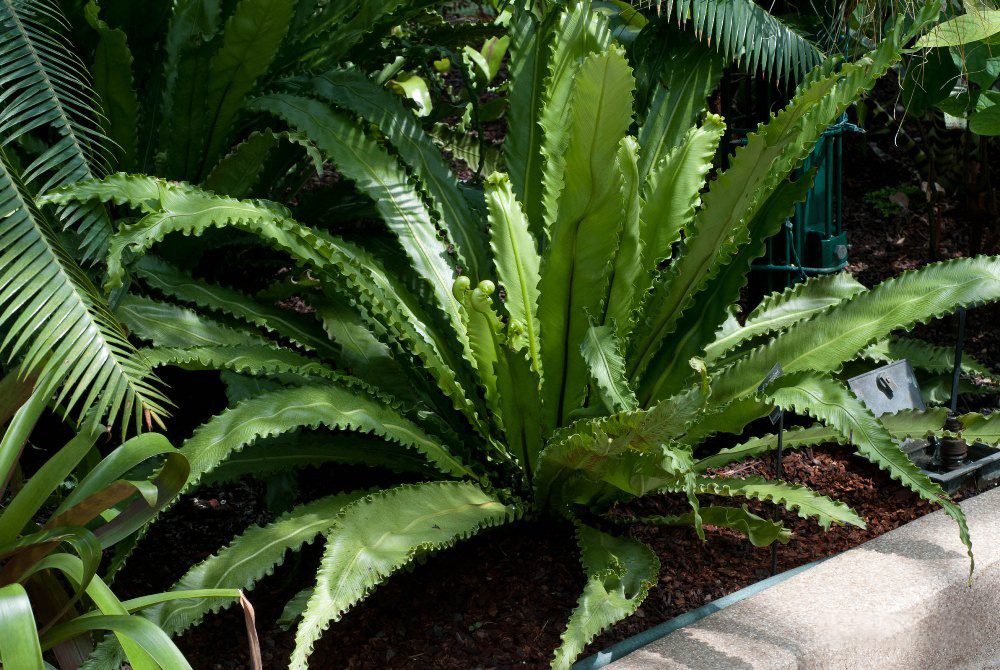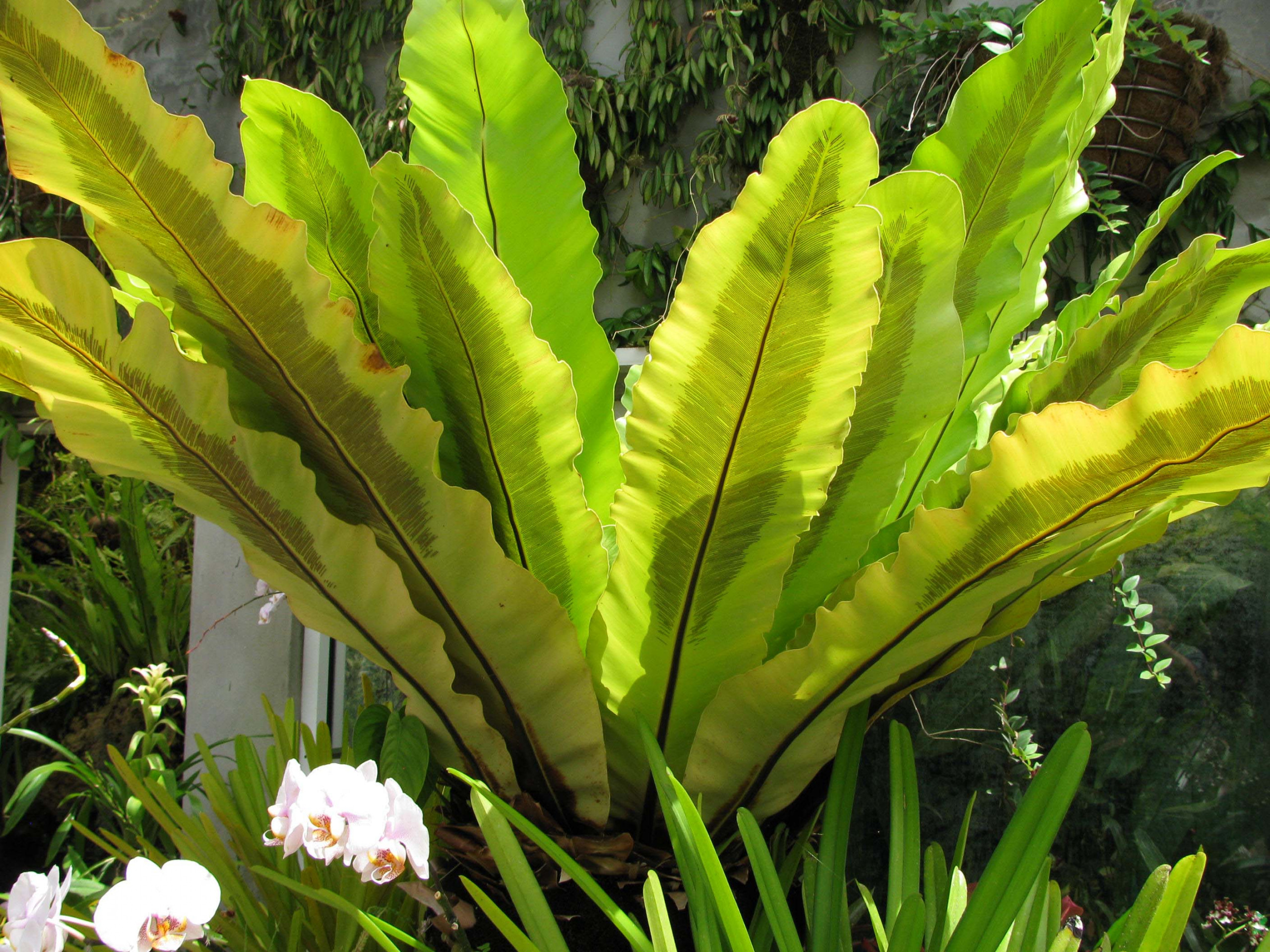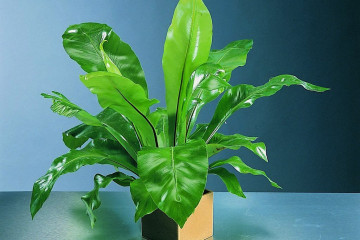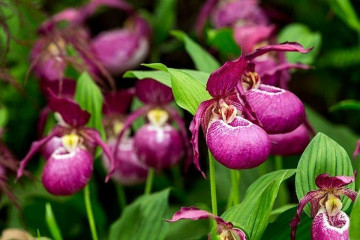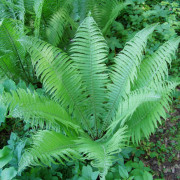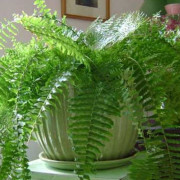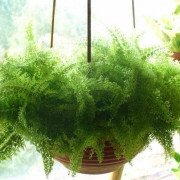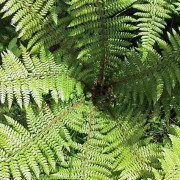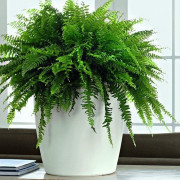Asplenium nidus: examples of the main varieties and conditions for flowering in the house
Content:
Asplenium is a fern perennial, which is often used as an indoor plant. Differs in decorative appearance, belongs to the Kostentsov family. Has a second name - "Kostenets". This is a short flower with large spread leaves. Many people are interested in how to maintain an asplenium plant.
Main types
There are about 700 different species of Asplenium, which vary in appearance, size, and description.
Nidus
A popular species used in indoor floriculture. Asplenium nidus (nesting asplenium) has wide leaves that can grow up to 1.5 m, a purple strip is noticeable in the center. The root system is powerful with many roots.
Osaka
Asplenium Osaka has elongated green leaves. The central part of the flower is characterized by brown or burgundy shades. The shape of the flowers is feathery. Quite a finicky plant. Asplenium Anticum Osaka does not tolerate the ingress of water into the root outlet.
Viviparous
The leaves of the viviparous asplenium (asplenium viviparum) are wavy and are collected in a rosette. Each shoot has many segments up to 1 cm in length. In an adult plant, brood buds are formed at the ends of the leaves.
Hairy
Asplenium trichomanes differs in that the leaves can take different shapes. It reaches a height of 50 cm. The leaves converge to the central part of the flower in the form of a rosette, which is colored brown. It has an economic purpose, it is considered a dwarf.
Carrot-leaved
Asplenium daucifolium is great for alpine slides and greenhouses. The leaves are segmental, so the plant is very similar to ferns. The color is dark green at the top, and lighter at the bottom.
Home care
Asplenium does not require special care at home. It is important to look after him by following simple rules.
Humidity
Moderate humidity is preferred. In nature, it grows in the tropics, which is why they create the appropriate conditions for its cultivation. The first option is to place a container of water near the pot. The second is to periodically spray the plant with a spray bottle.
Watering
Asplenium loves abundant watering. Moisture stagnation must be excluded. It is recommended to set the correct irrigation regime. A pot must have good drainage in order to avoid root rot.
The soil
The soil should be light and nutritious so that the roots can breathe normally. The best composition is considered to be a mixture of equal amounts of sod land, leafy soil, coconut substrate and humus.
Temperature
The optimum temperature is considered to be up to +27 ℃. Some varieties can survive frost down to -10 ℃. In winter, the normal temperature is 15-18 ℃ above zero.
Lighting
Aspleyim nidus prefers diffused light. Direct sunlight can cause leaf burns. Better when the pot is in a shaded place. It is recommended to choose east or west windows.
Reproduction methods
Asplenium nidus is propagated in several ways:
- By dividing the bush. When a large number of divisions appear on an adult plant. In the spring, these parts are separated from the adult plant and transplanted to a permanent place.The sections of the cuts need to be treated with charcoal, since the flower does not really like this process.
- Disputes. Spores form on the lower part of the leaf, which can act as planting material for reproduction. Carefully scrape them off the plate and plant them in the prepared soil. The first shoots appear in about 12 weeks. Already grown flowers are transplanted to a permanent place.
- By the kidneys. The upper side of the leaf is the location of brood buds. Nursing is similar to that of an adult culture. After some time, rooting will occur and the plant can be transplanted to a permanent place.
Asplenium nidus flower is an unusual green plant that is quite possible to grow at home. The flower does not require special care, grows without problems, multiplies easily, and is rarely affected by diseases.
